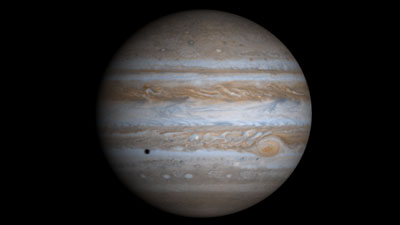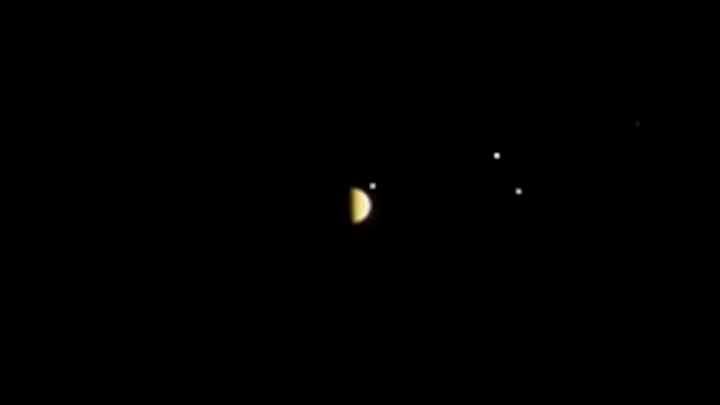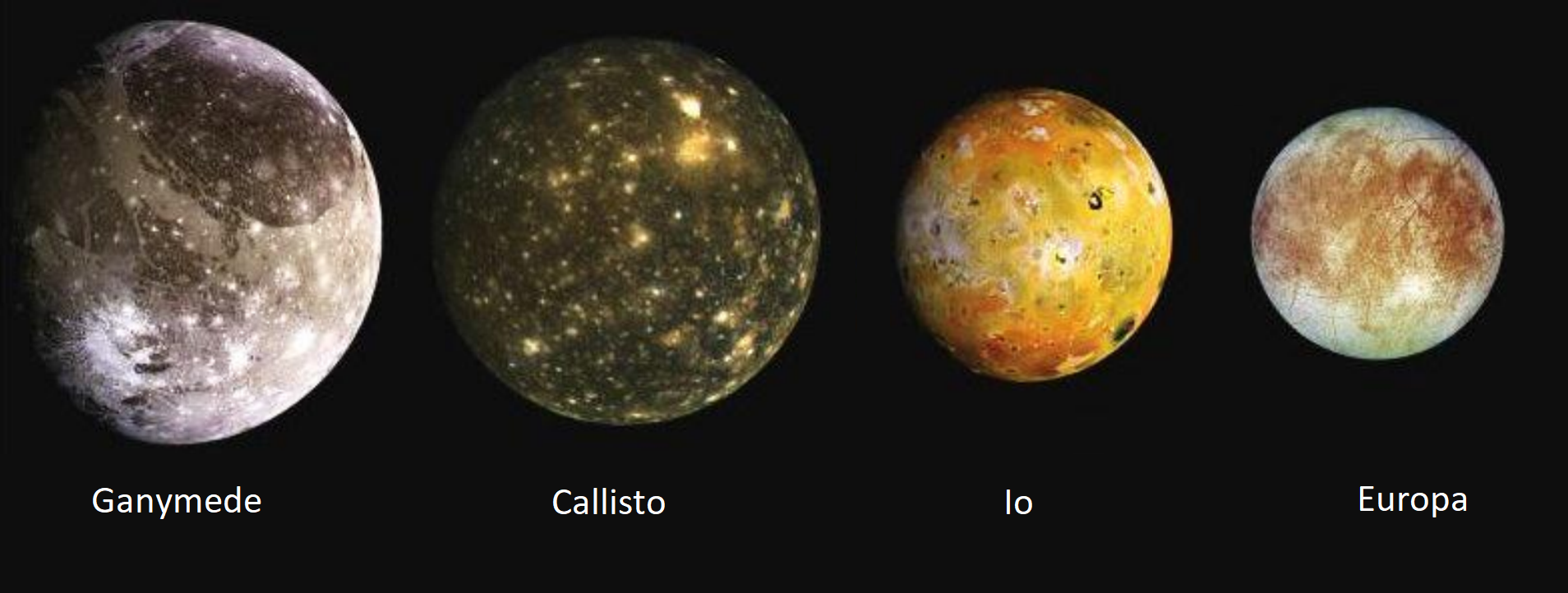(Printable version, go to full version)
Jupiter is the largest planet in the Solar System: more than 11 times bigger than the Earth and around of 320 times heavier than it. Jupiter is also the planet with more moons orbiting around it: 79 moons have been discovered up to 2018.


However these moons are not equal in size. The biggest ones (Io, Europa, Ganymede and Callisto) were the first discovered by Galileo Galilei in 17th century. It was in Galileo’s honour why they are called the Galilean Moons.

The four Galilean Moons (Credit: NASA)
During this Interactive Science Case, students will make use of two of the most used software for astronomical purposes. Their goal is to obtain the Jupiter’s mass by applying the Kepler’s Laws and basic maths based on measurements done with Cosmographia and Stellarium.
| Teacher's Guide | Student's Guide | Quizzes | Web Tools |
|---|---|---|---|
    |
    |
    |
    |
Click on the icon to find out the material per level. Material under construction will appear with a grey icon.


Cosmographia Stellarium
| Booklets | Resources |
|---|---|
You can give us some feedback of this Science Case or report any mistake comitted by filling the following form: Contact form